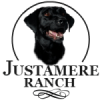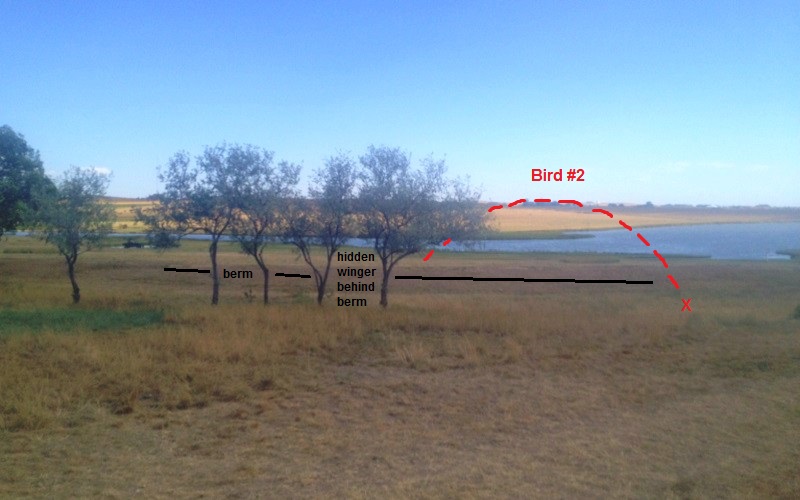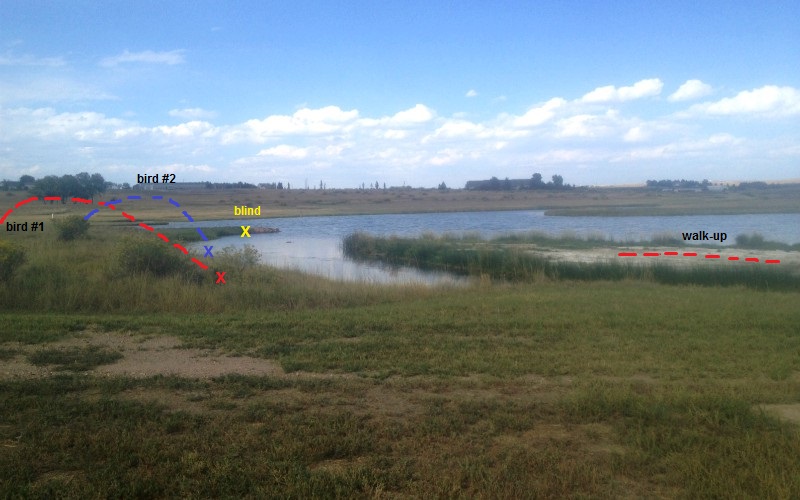Posts Categorised: Field
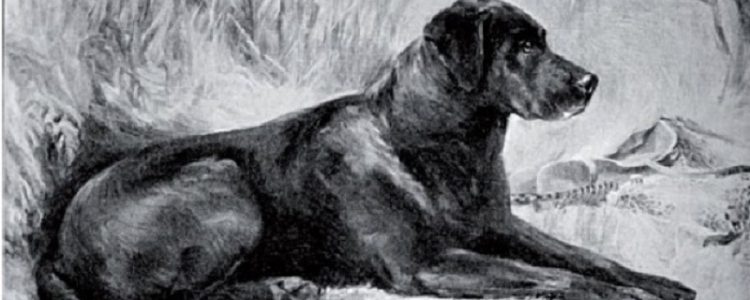
BRITISH FIELD TRIALS
The first documented field trial was held in England in 1899 and consisted mostly of Flat-Coated and Curly Coated retrievers.
Four years later Munden Single became the first Labrador to win a Challenge Certificate (like ‘winning the points’ in an AKC dog show).
Then the following year she became the first Labrador to run in a field trial.
Dual purpose Labradors have been around for a long time!
“It is improbable that Labradors will be as popular as the Flat-coated Retrievers; they are essentially a working breed and do not lend themselves to popularity. However, if one can take the numbers registered at the Kennel Club as some sort of a guide, the breed is becoming more widely known and appreciated, but it is hoped that they will never be kept for the purpose of showing only.”
The Labrador Retriever – A complete Anthology of the Dog
Quoting Maurice Portal, circa 1912
Courtesy: Google Books
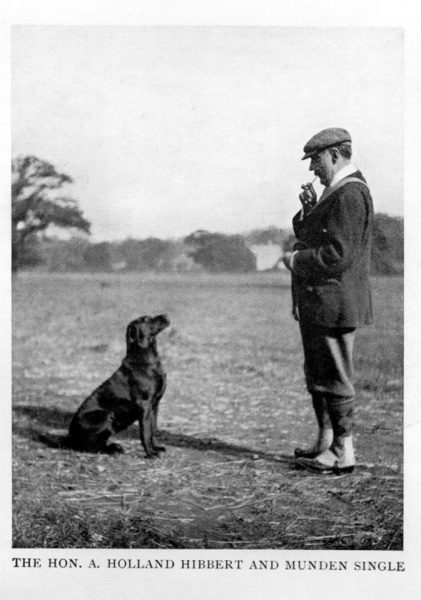
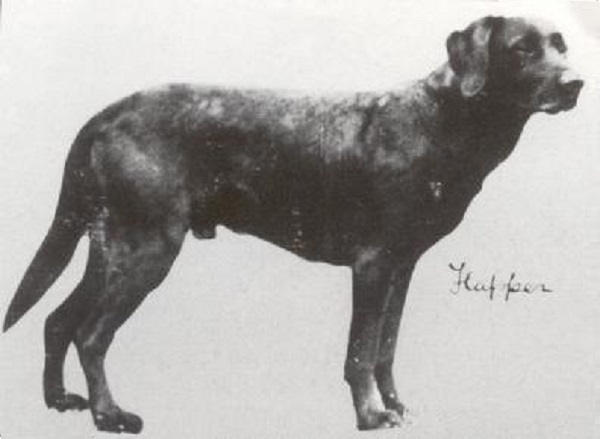
MAURICE PORTAL AND FTCH FLAPPER
A few years later, three Labradors ran in another field trail against a field of mostly Flat-Coated retrievers. All three Labs were related.
Munden Single had three Buccleuch grandparents and the fourth descended from Buccleuch dogs.
Flapper’s pedigree included Buccleuch Avon, Buccleuch Ned, Malmesbury’s Tramp, Malmesbury’s Juno – dogs that also appear in Munden Single’s pedigree.
The third Lab was Dungavel Juno, a granddaughter of Munden Sentry who was a full brother to Munden Single.
Note: Flapper is also shown laying down at the top of the page.
More on this early field trial:
“The next item of importance that took place in 1907, was the 2nd All-Aged Stake held by the [English] Kennel Club on November 26th & 27th.
“In a field of 20 runners there were fifteen Flat Coats, three Labradors, and two others.
“The Labradors were Mr. Portal’s Flapper, The Duchess of Hamilton’s Dungavel Juno, and Holland-Hibbert’s Munden Single.
“So foul was the weather on the morning of the first day that a vote was taken of handlers and guns whether to continue after lunch – a situation known to many hardened field triallers. Fortunately, they voted to continue, which gave an historic result.
“Flapper was first, Juno was second and M. Single gained the fourth prize. The Labrador had arrived on the field trial scene with a vengeance.
“Flapper, who became a FT Champion, was handled by Maurice Portal, a man who, as Vice Chairman, was to play a major role in the direction of the Labrador Club in its formative years.
“This was the first time a Labrador had won a major stake. Flapper was 5 years old when he won this trial and was to continue to win further honours. He was to become a powerful stud force siring many litters.
“It was Flapper more than any dog to date, whose brilliant accomplishments made an enormous impression on the shooting public. More than any other dog he convinced the public of the superiority of the Labrador over the previously ubiquitous Flat Coats.”
Field Trials – Past Achievements (Part I to 1914) – George Jenken on
http://www.thelabradorretrieverclub.com/news-articles

FTCH PETER OF FASKALLY
In 1911, FTCH Peter of Faskally won the International Gundog League’s Championship Stake for retrievers. His handler, Archibold Butter, adapted whistle and hand signals from working sheepdogs to guide Peter to unseen birds. This was the beginning of ‘handling’ that we see today in field trials and hunt tests.
Peter descended multiple times from the Buccleuch and Malmesbury dogs. He also had a good dose of Munden dogs in his pedigree. His paternal grandfather, Sherfield Spratt, was a full brother of Munden Single. And Sherfield Spratt was bred to Waterdale Twinkle, his niece by Munden Sentry. Peter’s maternal great grandmother was Munden Single.
Many great dogs descend from Peter through FTCH Patron of Faskally, FTCH Peter of Whitmore and Dual CH Banchory Bolo.
AMERICAN FIELD TRIALS
It’s interesting to note that Labradors weren’t accepted for registration with the American Kennel Club until 1917. And even ten years later, there were only 23 new registrations.
In the early years in America, field trials were the sport of wealthy families and they were a closed group. Sometimes trials were held on Mondays so few working people could attend.
Often the dogs were trained by British experts who had been enticed to America to manage the kennels. And because the kennel men who trained Arden Labs were so good, there was a rule change in 1936.
The new Amateur Open class required the owner, Averell Harriman, to handle his own dogs or admit defeat. Although he had never been to a trail nor had he ever handled his own dogs, he had to try.
The first two of his dogs didn’t do well, but Blind of Arden became one of three finalists. He was the last to run after the other dogs failed to find the bird. Harriman sent Blind well downwind of where he thought the bird had landed for the best chance of scenting it. But Blind continued past the spot and Harriman watched helplessly because he couldn’t whistle him back.
Good thing! The bird was probably a runner, but Blind followed his trail and brought him back.
He won the field trail and even graced the cover of Life magazine.

It’s interesting to note the depth of quality that came from Harriman’s Arden kennel.
His breeding program started with importing Peggy of Shipton and breeding her to another import FC Odds On. They produced Blind and his sister, Decoy of Arden who became the first AKC field champions.
Decoy was bred to CH Raffles of Earlsmoor and produced the top show dog CH Earlsmoor Moor of Arden.
A repeat breeding produced 3x NFC CFC DUAL CH Shed of Arden.
DESCENDANTS
And, yes, these dogs do appear in the pedigrees of Justamere Ranch Labs.
In Dee‘s pedigree, Munden Single shows up at least twice through NAFC FC River Oaks Rascal.
Many others show up several times, including:
- FTCH Flapper, Dungavel Juno and FTCH Peter of Faskally through Eng DUAL CH Banchory Painter and his grandson, FC Eng FTCH Hiwood Mike
- FTCH Peter of Faskally through Eng CH Banchory Danilo and Eng CH Jerry of Sandylands
- NFC Blind of Arden through FC AFC Trumarc’s Raider and 2xNAFC 3xCNFC FC River Oaks Corky
- Peggy of Shipton through NFC AFC CFC Cork of Oakwood Lane, DUAL CH CFC Little Pierre of Deer Creek, 3xNFC CFC DUAL CH Shed of Arden, NFC 2xNAFC Super Chief, DUAL CH CFC Ridgewood Playboy, Can DUAL CH Coastal Charger of Deer Creek
- FC Decoy of Arden through 3xNFC CFC DUAL CH Shed of Arden and CH Earlsmoor Moor of Arden
- Eng CH Raffles of Earlsmoor through his son, 3xNFC CFC DUAL CH Shed of Arden
- CH Earlsmoor Moor of Arden through 2xNAFC 3xCNFC FC River Oaks Corky
- 3xNFC CFC DUAL CH Shed of Arden through FC Martens Mister Nifty and all of the dogs listed under his ancestors Raffles, Decoy of Arden and Peggy of Shipton
So all of Arwen’s and Cotti’s descendants trace back to these dogs.
In Chip‘s pedigree, FTCH Flapper, Dungavel Juno and FTCH Peter of Faskally show up through FC Eng FTCH Hiwood Mike.
Many others show up several times, including:
- NFC Blind of Arden through FC AFC Trumarc’s Raider and 2xNAFC 3xCNFC FC River Oaks Corky.
- Peggy of Shipton through NFC AFC CFC Cork of Oakwood Lane, DUAL CH CFC Little Pierre of Deer Creek, 3xNFC CFC DUAL CH Shed of Arden, NFC 2xNAFC Super Chief, DUAL CH CFC Ridgewood Playboy, Can DUAL CH Coastal Charger of Deer Creek.
- FC Decoy of Arden through 3xNFC CFC DUAL CH Shed of Arden and CH Earlsmoor Moor of Arden.
- Eng CH Raffles of Earlsmoor through his son 3xNFC CFC DUAL CH Shed of Arden.
- CH Earlsmoor Moor of Arden through 2xNAFC 3xCNFC FC River Oaks Corky.
- 3xNFC CFC DUAL CH Shed of Arden through 2xCNFC FC AFC Tar Baby’s Little Sweet Stuff, NAFC FC Ray’s Rascal, DUAL CH Grangemead Precocious, NAFC-FC River Oaks Corky and all of the dogs listed under his ancestors Eng CH Raffles of Earlsmoor, FC Decoy of Arden and Peggy of Shipton.
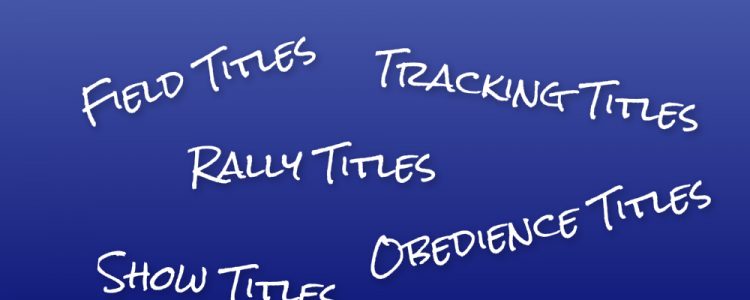
These are mostly American titles (AKC and UKC/HRC), but there are also some we see from Canada and England.
In the pedigrees I share I try to differentiate between titles earned in the US versus other countries.
For example, CH = AKC show champion, U-CH = UKC show champion, Can CH = Canadian show champion, Mex CH = Mexican show champion, Eng CH = English full show champion, and English Sh CH = English show champion.
Also included are some that are not technically titles because they’re not bestowed by the country’s governing body.
For example, WC and CC are certificates given by The Labrador Retriever Club rather than by AKC.
There are many organizations awarding titles, but these are the main titles we see for the retriever breeds.
FIELD TITLES |
|
|---|---|
| DC or DUAL CH | A Show Champion AND Field Champion – Note: We haven’t had one of these in Labradors since the early 1980s |
| FC | Field Champion |
| AFC | Amateur Field Champion |
| “C” in front of FC or AFC | Canadian Field Champion – sometimes seen as FTCH |
| “N” in front of FC, AFC, CFC OR CAFC | National Field Champion titles |
| Eng FTW | English Field Trial Winner (part of the Eng FTCH, but not actually a title) |
| QAA | Qualified All-Age – means the dog has won enough in the Qualifying stake to compete in the Open or Amateur stakes at field trials, not actually a title (sometimes seen as *** following the name) |
| QA2 | Qualified All-Age 2, recent AKC title for dogs that have twice met the requirements to compete in the Open or Amateur stakes at field trials |
| JH | Junior Hunter |
| SH | Senior Hunter |
| MH | Master Hunter |
| MNH | Master National Hunter – listed as MNH4 or MNH5, etc when the dog has passed the Master National more than 3 times |
| SHR | Started Hunting Retriever (HRC/UKC title) |
| HR | Hunting Retriever (HRC/UKC title) |
| HRCH | Hunting Retriever Champion (HRC/UKC title) |
| GRHRCH | Grand Hunting Retriever Champion (HRC/UKC title) |
| UH | Upland Hunter (HRC/UKC title) |
| CPR | Certified Pointing Retriever (APLA title) |
| APR | Advanced Pointing Retriever (APLA title) |
| MPR | Master Pointing Retriever (APLA title) |
| GMPR | Grand Master Pointing Retriever (APLA title) |
| WC | Working Certificate (LRC certificate) |
| WCX | Working Certificate Excellent (sometimes awarded by local breed clubs) |
SHOW TITLES |
|
|---|---|
| DC or DUAL CH | A Show Champion AND Field Champion – Note: We haven’t had one of these in Labradors since the early 1980s |
| CH | Conformation Show Champion |
| Pointed or Major pointed | The dog has won in the show ring, but is not yet a champion – not actually a title |
| GCH | Grand Champion – also GCHB Bronze, GCHS Silver, GCHG Gold, GCHP Platinum |
| U-CH | UKC Conformation Show Champion |
| U-GRCH | UKC Conformation Show Grand Champion |
| Eng CH | English Show Champion w/field qualification certificate or Eng Sh CH if the dog qualified in the show ring, but has not qualified in the field (approximately WC equivalent) |
| Eng CCW | English Challenge Certificate Winner (part of the Eng CH, but not actually a title) |
| BIS | Best in Show (achievement, not a title) |
| BISS | Best in Specialty Show (achievement, not a title) |
| BPIS | Best Puppy in Show (achievement, not a title) |
OBEDIENCE TITLES |
|
|---|---|
| CGC | Canine Good Citizen |
| CGCA | Advanced Canine Good Citizen |
| BN | Beginner Novice |
| CD | Companion Dog |
| GN | Graduate Novice | CDX | Companion Dog Excellent |
| GO | Graduate Open |
| UD | Utility Dog |
| UDX | Utility Dog Excellent |
| OM | Obedience Master |
| OGM | Obedience Grand Master |
| OTCH | Obedience Trial Champion |
| NOC | National Obedience Champion |
RALLY TITLES |
|
|---|---|
| RN | Rally Novice |
| RI | Rally Intermediate |
| RA | Rally Advanced |
| RE | Rally Excellent |
| RM | Rally Master |
| RAE | Rally Advanced Excellent |
| RACH | Rally Champion |
| RNC | Rally National Champion |
TRACKING TITLES |
|
|---|---|
| TD | Tracking Dog |
| TDU | Tracking Dog Urban |
| TDX | Tracking Dog Excellent |
| VST | Variable Surface Tracking |
| CT | Champion Tracker |
AGILITY TITLES |
|
|---|---|
| ACT1 | Agility Course Test – Introduction to Agility |
| ACT2 | Agility Course Test – in between Introduction and Novice levels |
| NA | Novice Agility |
| NAP | Novice Agility Preferred |
| NAJ | Novice Agility Jumper |
| NJP | Novice Agility Jumper Preferred |
| OA | Open Agility |
| OAP | Open Agility Preferred |
| OAJ | Open Agility Jumper |
| OJP | Open Agility Jumper Preferred |
| AX | Agility Excellent |
| AXP | Agility Excellent Preferred |
| AXJ | Excellent Agility Jumper |
| AJP | Excellent Agility Jumper Preferred |
| MX | Master Agility Excellent |
| MXP | Master Agility Excellent Preferred |
| MXJ | Master Excellent Jumper |
| MXP | Master Agility Jumper Preferred |
| MACH | Master Agility Champion |
| PACH | Preferred Agility Champion |
| AGCH | Agility Grand Champion |
| NAC | National Agility Champion |
| U-AGI | Agility I (UKC title) |
| U-AGII | Agility II (UKC title) |
| U-ACH | Agility Champion (UKC title) |
| U-ACHX | Agility Champion Excellent (UKC title) |
VERSATILE COMPANION TITLES |
|
|---|---|
| VCD | Versatile Companion Dog |
| VCCH | Versatile Companion Dog Champion |
TRICK DOG TITLES |
|
|---|---|
| TKN | Trick Dog Novice |
| TKI | Trick Dog Intermediate |
| TKA | Trick Dog Advanced |
| TNP | Trick Dog Performer |
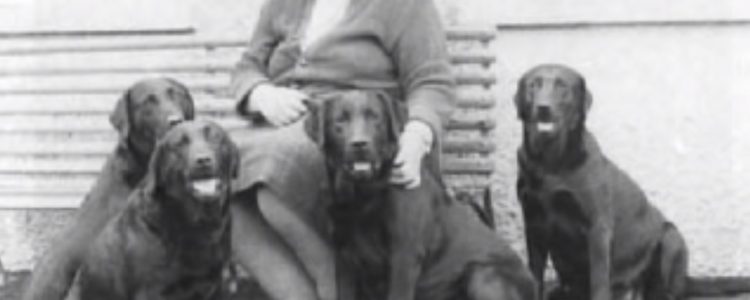
Mary Roslin Williams of Mansergh Gundogs
She bred Labs, she hunted over Labs, she competed with Labs and she taught about Labs. She had 7 generations of champions, and 15 or so dogs who won field trial awards.
In the early days, she lived in Mansergh Parish, just south of the Lake District, in England.
Mary Roslin Williams taught from practical experience and common sense.
Although she’s no longer with us, she left behind knowledge that she shared. Take a half hour to listen.
“It was with great sadness to me, that when they named the Labrador they didn’t call it the ‘Labrador Water Retriever’ … because we forget that the dog is a water dog. It’s job was water work.
“It’s job still is water work and we’ve adopted it and adapted it for different works… We ought to remember that, both when we breed and when we judge….
“Now here is a difficult thing because this is type and however much you have a standard, one thing it cannot describe is type. You’ve got to have type in your head. …
“My criteria for Labrador type is a very simple one. It must look like a Labrador. …
“… a Labrador’s job is not to hunt in front of you, flushing rabbits, flushing pheasants, however good.
“It is not to be a guide dog for the blind.
“It is not to be a dog for finding drugs or any of these useful things [like] finding … a dead body… That’s not it’s job.
“It’s very nice of it to do it… but it is not it’s job.
“It’s job is to sit or walk at heel until told to go. And it’s only told to go either at the end of the drive or when the bird comes down if you’re in … a duck blind and you want it to go.
“It shouldn’t run in, you should say “Right, I see that goose is going to escape. Right, go.”
“But it’s very easy to sit here and say it and very difficult to do, but that is it’s job.
“Then when the bird is down, the dog is supposed to go out and to get the scent – not 300 yards away like a Pointer, not groveling like a Spaniel with it’s elbows out – it’s supposed to get the best high scent from a reasonable distance and then be able to put it’s head down, follow the scent without difficulty … and then it picks it’s bird up. And it may have a very heavy thing to pick. And it’s supposed to have the lift and the shoulders to take it.
“And for that you need a dog bred on exactly classical lines. And a classical line is a level back, not a rake. A level back. Any retrieving dog that has to also mark should have a level back. …
“It should have a longer back to its neck than to it’s throatline. … It should have an 11″ back to its neck and a 4″ throatline, not an 11″ throatline and 4” back.
“If it was a horse it would be putting it’s ear in your mouth…
“It’s very dangerous for a Labrador to have that enormous exposed windpipe… And then when they pick their bird, it stands to reason that… the long line is on the top and the short line is underneath.
“Now the shoulders should be laid back and this is very important too.
“In a pointing setter, they have a laid back shoulder. Fair enough. But they don’t have the classical right angle at the point of the shoulder. They are over angulated… We want the right angle or thereabouts give or take a few degrees.
“If you have a laid back shoulder, a right angle there and a level back … the foreleg comes back under the girth. It’s not under their ear and neither is it straight under the point of the shoulder. It is back and the elbow is under the girth.
“So there you have the exact angulation that the dog can easily mark the bird when he’s walking because it’s easy for him to have his head up. He can get a scent within a reasonable distance… and then put his head down. And he can get his head down perfectly easily without having to put his elbow out like a Foxhound does. So therefore you have a perfect mechanism there.
“And he must have that long line on the top of his neck to pick his bird. He then picks his bird – which takes a lot of strength – and gets it back onto the layback of his shoulders easily carrying it on the layback of his shoulders.
“So if you have the classical front, that is exactly right for a Labrador, a Golden, a Flatcoat, a Curly, a Ches, but it isn’t right for a Pointer and Setter. And it isn’t right for a Foxhound. They have their own fronts, slightly open.
“Now we come to the Spaniels. The Spaniels job is to grovel about on the ground.
“He has to quest with his nose down and so therefore he is over angulated. His shoulder is slight constantined so that he has less than a right angle at the point of the shoulder and he has a more open angle at the elbow. And that is so he can grovel and get down and shovel about.
“And he has to pick up a thing that is very, very much heavier in proportion to his weight, particular a Cocker… and they do it because they can get their heads underneath.
“They don’t pick them up like a show Cocker does and this is why the show Cocker is very useless for work. They are over their legs and they are not angulated properly for a working Cocker.
“They more or less got a Labrador’s angulation. And when they try to put their heads down they’re trying to lift a very heavy weight … and they can’t do it. It’s too heavy for them.
“And so with that working angulation … they come under their bird… and before you can say Jack Robinson, the hare is across their shoulders and they’ve got the weight back on their shoulder blade.
“So the angulation is the most important thing and if anybody says to you a shoulder is just one of those things, it isn’t. It is absolutely important in a working dog… You must breed your shoulder to suit your work. …
“Being able to get down as easily as up and being able to up as easily as down, you need to have a level back.
“And if you have a level back, it very nearly stands to reason that your angulation will be right behind. And if your angulation isn’t right behind, then you can be jolly sure the shoulder is wrong.
“… if you have an over angulated shoulder with open angles, like a Pointer – I’m citing one of my own dogs now.
“I had a lovely dog name Tarmac … and a very good worker. But I can cite him because he was wrongly made.
“He had a marvelously erect shoulder. He then had a raked back. And the consequence was that he was over angulated behind so that he had too much stifle and too much hock – too long a hock – and it was too far behind him. And that is what happens when you get a raked back.
“Now that was the most rightful inconvenience to him when he was swimming because he swam like a Pointer.
“He was all right once he got the bird in his mouth, but when he didn’t have a bird in his mouth the fact that he didn’t have a level back and that he had an over angulated hind legs because of the fact that the rake pressed them down, he had difficulty in the water work. So I know from experience that is not a good thing. …
“At one time because we had a craze for very, very short backs – which they were mistaken for short coupling because a short back is not short coupled, the word ‘short-coupled’ means the loin – and because they thought they must have very short backs, they were absolutely cramming dogs so close together that they had no where to put their feet when they ran because they were crabbing and they had a very short line … from the point of the hip to the point of the buttock, they had no rumps whatsoever.
“And I am quite certain for work – particularly swimming – you must have a decent balanced length from the point of the hip to the point of the buttock. …
“Now if you’ve got your backline right, then you’re going to have your angulation just about right.
“And it’s well to remember – again – that a Labrador is not meant to stand with it’s legs out behind it like a Pointer or a Setter. They’re meant to stand more or less under the point of the buttock.
“In other words the dog is standing slightly over his leg and he mustn’t stand sickle-hocked with his feet too far forward.
“He mustn’t stand like a Pointer or Setter with … a rakish backline which means he’s over angulated.
“And a very important point, … for a perfectly balanced dog … from the hock to the ground … should be at exact right angles to the ground – not stretched out back, nor sickle underneath. …
“If that dog drops it’s hock correctly, then it is standing absolutely correct on it’s feet and you’re less likely to have foot trouble.
“… If you’ve got your angulation right and your level back, you’ve got a balanced dog standing on it’s feet correctly with it’s weight very, very slightly on it’s hocks … and it should stand in a position … that it could jump in any direction immediately. It can either jump forward or backwards or to either side because it’s slightly on it’s hocks.
“Any horseman will know that you must not turn a horse on its forehand… if they stand just in that balanced position, so that they could take off in any direction, you’re much less likely to have joint trouble in later life and you won’t have foot trouble. You won’t have toe trouble.
“Those, to me, are the salient points of a Labrador’s conformation.
“You must have the coat. You must be coated right over, even the testicles and inside of the thighs … with the same coat all over. And it must be dense.
“You want the nice balanced dog with a correct backline, very particularly the correct shoulder and then you will get the correct hindquarters.
“Standing correctly on it’s feet. And then you get a Labrador which can do absolutely any job. …
“And besides that, …it has to have a tender mouth and the ability to retrieve, the ability to mark and a thousand other things that you have in field trials and it’s like trying to get your football pools right. You’ll never do it, but we try.”
Would you like to learn more? She wrote two books – and although they can be hard to find – they are worth the effort.
Advanced Labrador Breeding (aka Reaching for the Stars)
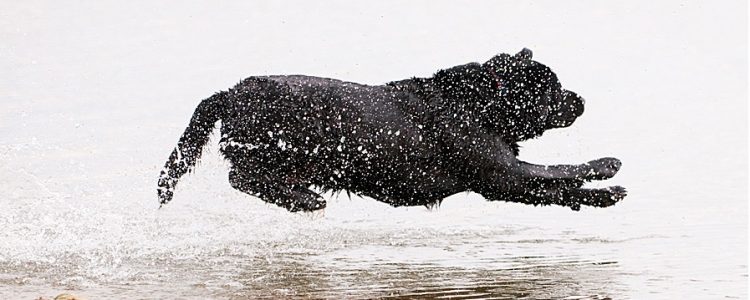
The last local AKC retriever hunt test of the season is in the books.
Beautiful property with fabulous water, good weather (yes, a bit hot) and lots of great dogs and their handlers.
There was even a chocolate boy I’ve got my eye on!
My co-judge, Jeff Baldwin, drove all the way from Utah to bake in the high plains sun while Wyoming lent us some of their wind every afternoon. After we designed the Senior test on Friday, he also judged Junior on Saturday while I worked at Master and then we judged Senior together on Sunday.
It was a long weekend.
So what did Jeff and I set up and why?
The requirements for an AKC Senior test are a double retrieve on land and a double retrieve on water plus a land blind and a water blind.
Then we have to throw in a live flyer, an honor, a walk-up, a diversion shot and multiple decoys and other trappings to simulate a real bird hunt.
Here are some definitions by Rich Carpenter of PVHRC:
- BLIND RETRIEVE – The dog is sent to retrieve a bird that it did not see fall. The dog is expected to take hand, voice and whistle signals to direct it to the bird.
- DIVERSION – Either a shot or a fall designed to divert the dog’s attention from the task at hand.
- DOUBLE – Two birds to retrieve.
- HONOR – Dog to sit quietly off-leash on or near the line while another dog retrieves.
- MARK – A retrieve that the dog has seen fall.
- MEMORY BIRD – First bird the dog sees thrown/shot on a multiple mark. Usually the last retrieved.
- STEADY – Dog does not leave assigned spot until instructed by the handler to retrieve.
- WALK-UP – Bird is thrown while handler and dog are walking with the dog at heel, much like jump shooting.
You can see the entire glossary at http://pvhrc.com/hunt-tests/glossary/
We chose to start off with the land series in the morning and the water series afterward to give the dogs a chance to cool off in the afternoon heat.
The first two photos were taken from the “line” – the spot where handlers bring their dogs to start the test.
To begin, we ran a “test dog” (a dog who was not in contention) to make sure everything worked as we planned and to show all the handlers the test set up.
Of course, the dogs in contention didn’t get to watch!
After completing those two marks successfully, the test dog (and handler) moved to the “honor box” which is a spot nearby where the dog can watch the next dog work.
Having just completed two retrieves the honor dog is often still excited, but must be “steady” (remain quietly in place, off leash) and watch the next dog retrieve the same marks.
This is often a challenge for dogs at this level.
Next the handlers brought their dogs one-by-one to the line.
When they signaled they were ready, we had bird tech #1 throw a duck from a winger hidden behind a clump of trees near the left side of the field.
The bird went from right to left and landed in some rather sparse cover, about 70 yards away. There were multiple goose decoys the dogs had to run through to get to the bird. Just before throwing the bird, the bird tech blew a duck call and shot a blank to get the dog’s attention.
As the birds are thrown, handlers must bring the shotgun to their shoulder like they were actually shooting.
For safety reasons, the guns are disabled.
Many dogs wanted to retrieve right away, but they had to be steady and wait for the second bird to be thrown – a “double retrieve.” This bird was a “flyer” (a live bird that was thrown and then shot in the air) which is very exciting for the dogs. All the other birds were already dead before being thrown.
This bird #2 came out from a winger that was hidden behind the berm that ran parallel to and behind the line of trees. Flyers rarely land in exactly the same place for each dog so the distance to the bird varied, but averaged about 60 yards.
Because of the excitment caused by a live flyer, several dogs “broke” (ran to retrieve it before the handler’s command). Dogs that retrieved the bird without being released were disqualified. However if the handler was able to stop the dog quickly (within about 15 feet) and get it back to heel, they were allowed to continue but were penalized for a “controlled break.”
Some dogs didn’t break, but couldn’t contain themselves completely and moved a little bit towards the birds. This is called a “creep” and is penalized, but less than a controlled break. Any dogs that moved beyond the length of the gun barrel had to return to heel before they could be sent to retrieve.
After both birds were down, we gave the handler permission to send his dog. They could pick up the birds in any order, but usually chose to get the last bird down first. This is especially so when that bird is a flyer!
After delivering one of the birds “to hand” they were sent to retrieve the other bird. After the working dog was sent on the first retrieve, we dismissed the honor dog.
Sometimes dogs forgot where the other bird landed and had a big hunt or started back towards where they already found a bird.
Returning to an old fall and switching are both disqualifications. They are similar faults, but “returning to an old fall” is going back to where they already retrieved a bird while “switching” is abandoning a hunt for one bird to go to a different bird.
When a dog started hunting too far away from the bird or they started toward the other bird, handlers would blow their whistle and handle the dog to the bird using the same technique as a “blind retrieve.”
If the working dog did a passable job on the double retrieve, they next had a “blind retrieve.”
This is picking up a bird the dog didn’t see fall and so had to be directed to it. We “planted the blind” (placed a bird in a specific location when the dog wasn’t watching) near a small bush about 50 yards from the line.
To get to the blind, the dog had to pass some larger bushes and diagonally cross a dirt track. The location was to the left of bird #1 and slightly out of the left side of the first photo.
To get a passing score, the handlers had to “challenge the blind” by keeping their dogs close to a direct line to the blind and not let the dog run all around in hopes that he would eventually find it on his own.
Dogs were penalized each time they didn’t stop on the whistle or take the correct cast or maintain the new direction for at least a few yards. Because Senior dogs are at an intermediate level of training and still learning how to apply their training in a field situation, each penalty was only counted as a minor deduction.
We repeated this sequence of double retrieve, blind retrieve and honor for 31 dogs – 29 in contention plus the test dog (who honored for the first dog) and a bye dog (who was asked to retrieve while the last dog in contention honored him).
Dogs who had a passing score on land were “called back” to run the water series.
We moved a 1/4 mile south to a spit of land with a water channel on the left side and open water on the right.
This series was a double retrieve and a blind retrieve with a walk-up and a diversion shot. No honor, no live birds.
We started with the handler walking down the spit with their dog at heel. When they got to a certain point (known only to the judges), there was a gun shot and a bird was hand thrown to land in grass about 8-10″ tall and about 4-6′ from the water’s edge.
The second bird came out slightly left to right, with another gun shot, and landed with a splash about half way down the channel. Both bird techs were hidden behind tall bushes.
The dogs could retrieve the birds in any order, however when they were returning with bird #1, there was a diversion shot to set up the blind.
Most dogs did fairly well to great on the water double retrieve. There were a few that needed to be handled and some who needed to be handled to both the memory bird on land and one of the birds on water.
The blind was across to another spit of land and was placed just out of the water.
Except for some suction to the old falls and to a tiny bit of land poking out of the water, this was a straight forward blind. All the dogs who attempted it did fine.
Our goal as judges was to make both series as hunt-like as possible while staying within AKC’s rules for a Senior retriever hunt test.
We also wanted the handlers and dogs to enjoy it and to make sure everyone was safe.
Some dogs did very well overall, some did better on one series or the other and some had enough trouble that we couldn’t give them a ribbon this time.
I’m grateful to the Mile High Golden Retriever Club for asking me to judge, to the owners and handlers who entered their dogs, to all the helpers for handling the myriad of jobs and to my co-judge who made it so easy, it felt like we’ve been working together for years.
By the way, all of my dogs got to experience that great water.
The adult dogs loved it. The younger ones quickly learned that the end of grass doesn’t always mean there’s a gentle slope into shallow water. =D
And the drive home was rather quiet – except for some snoring coming from the back.
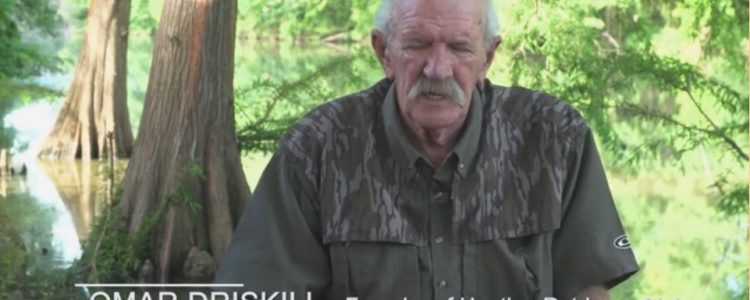
People have relied on their dogs for help retrieving game for many years. Probably many, many, many years.
As often happens when people get together, they’re compelled to see which dog is better. Thus the birth of competitive field trials.
Not everyone has the time, money or desire to compete in field trials, but they sure do like to show off what their huntin’ dawgs can do! Thus the birth of the Hunting Retriever Club.
“Conceived by Hunters for Hunters” became the motto of the HRC. Judges strive to set up realistic hunting scenarios with duck calls and camo, real birds and handlers shooting shotguns (albeit with blanks).
Omar Driskill, Richard Walters and Bill Tarrant are some of the men instrumental in the founding of retriever hunt tests and the HRC.
I was lucky to be able to run my first HRC test under Omar and still have the ribbon he awarded my dog!
Watch the video to learn some history of retriever sports in general and the beginning of the Hunting Retriever Club in particular. I especially like the comment someone made about misnaming the Started stake. See if you can catch what he thought Started should have been called!
(video courtesy of the Hunting Retriever Club Inc.)
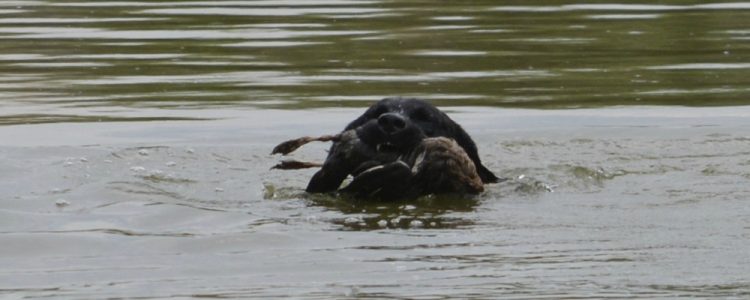
Wynk got to play on new grounds on Sunday where she earned her WC!
The Working Certificate test was hosted by the Labrador Retriever Club of Greater Denver.
Near Franktown, the property was nicely set up for retriever training and lots of people and dogs turned out for fresh air and some rather ‘moist’ skies!
The WC is a very basic retrieving test.
The judges have you bring your dog up, on leash, and then hold them by the collar while someone throws a duck. Release your dog and he brings the bird back to you.
Easy-peasy! Then you do the same thing on water, twice.
The test was originally designed for show dogs to prove they have the retrieving instinct, even if they never get to hunt.
For Wynk it was just another fun day because she’s already proven herself in the field.
She started off with one mark on land – near the top of a little hill – no problem. But there was something new, something she’d never seen before. A blind (camo fabric) out in the field, hiding people. ‘What’s that?,’ she asked. So she had to go take a peek and say hello to the bird boys. Then remembered she had to get her bird back to mom! Scooped it up as she ran back and delivered to hand. Land portion completed!
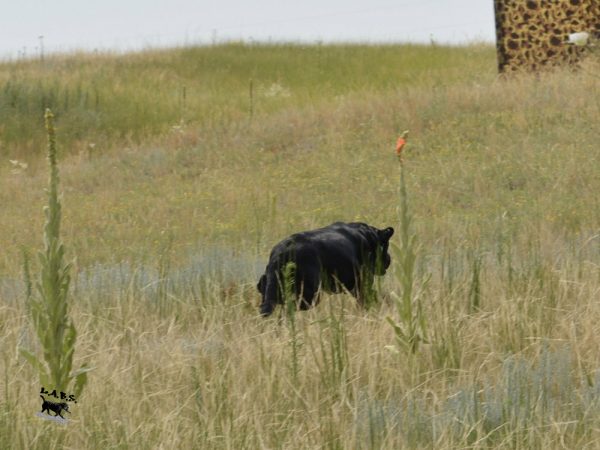
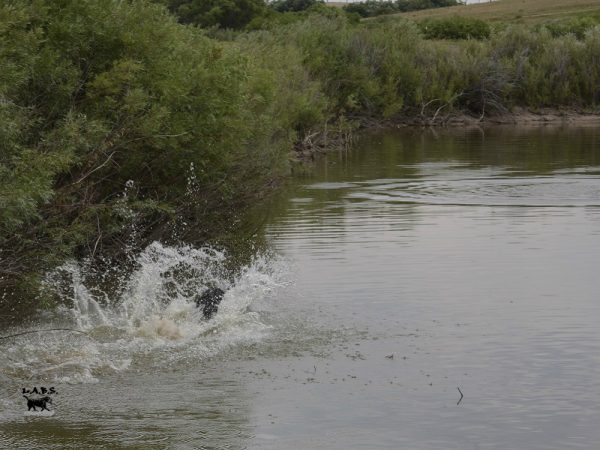
After a bit, we worked the water portion – back to back retrieves in a pond enclosed by tall reeds and other vegetation.
Another new experience for Wynk.
Out and back, delivered to hand for each mark, with her signature squeal as she left the line. Quite proud of my little Lab!
Thanks to Linda Alexander for the great photos!
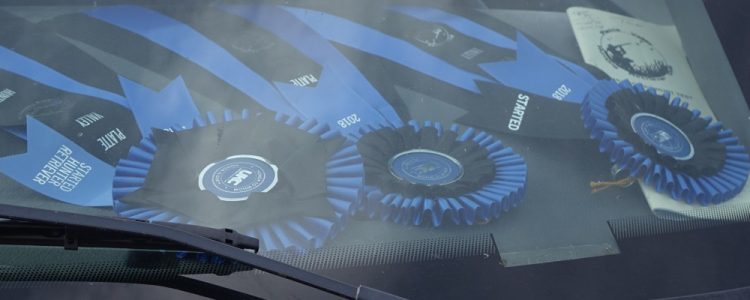
We ran in the hunt test at Indian Meadows in Snyder, CO on May 5-6, 2018. Thanks to Platte Valley HRC for hosting the event!
Tisket only needed two passes to complete her Started Hunting Retriever (SHR) title, so she was entered both days.
The first land mark on Saturday was in fairly heavy cover and a bit shorter than what we’d practiced. Many dogs, including Tisket, overran the mark and had to work their way back, while honoring their noses. Tisket ran back and forth in the area where she thought the bird had dropped, in an effort to pick up the scent. You could tell when she did catch the scent because her nose looked like it had been snagged by a fish hook.
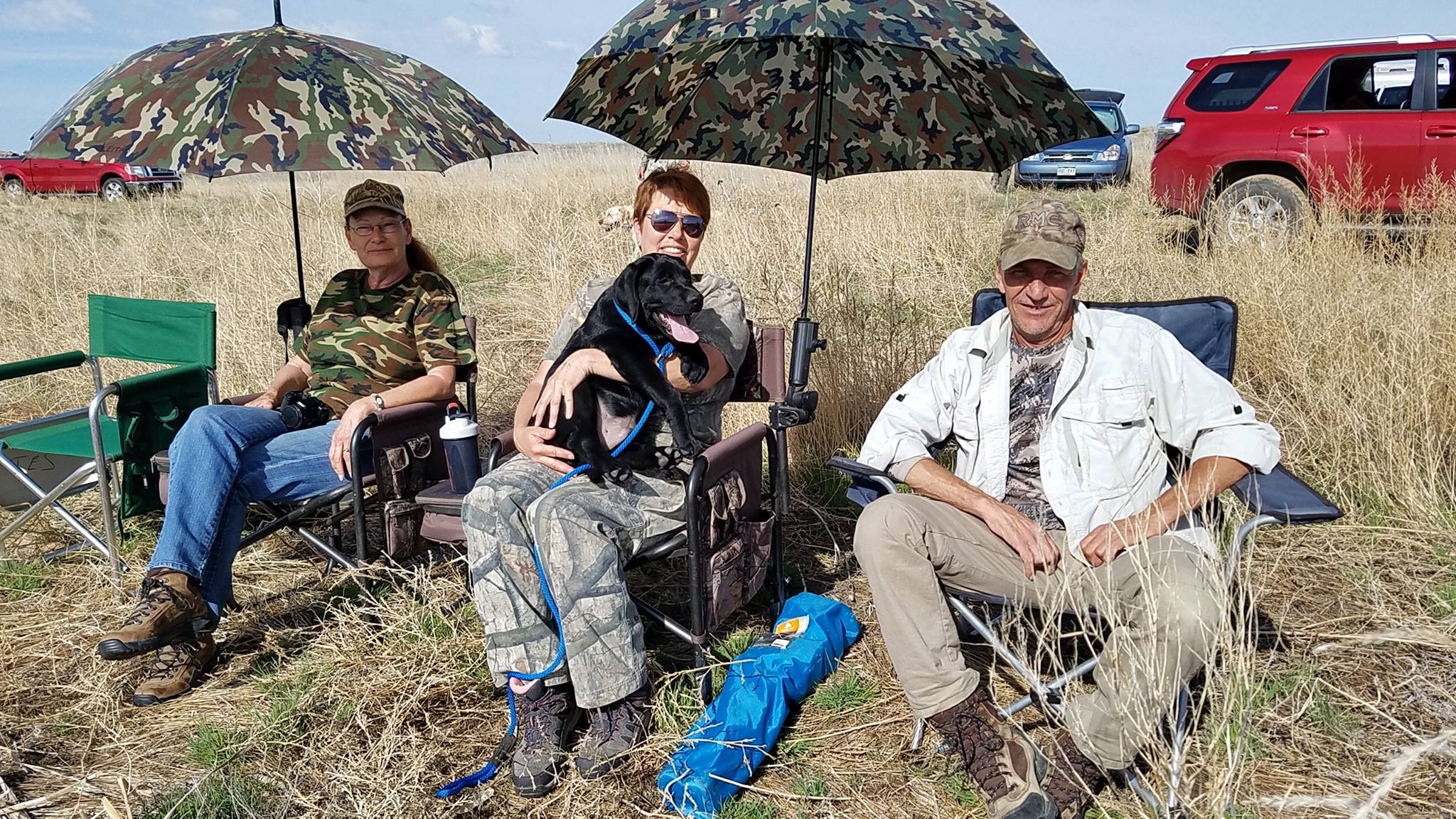
She ran straight to the second mark – “stepped on it” – and brought the bird back to me. The land marks were done, next up were the water marks!
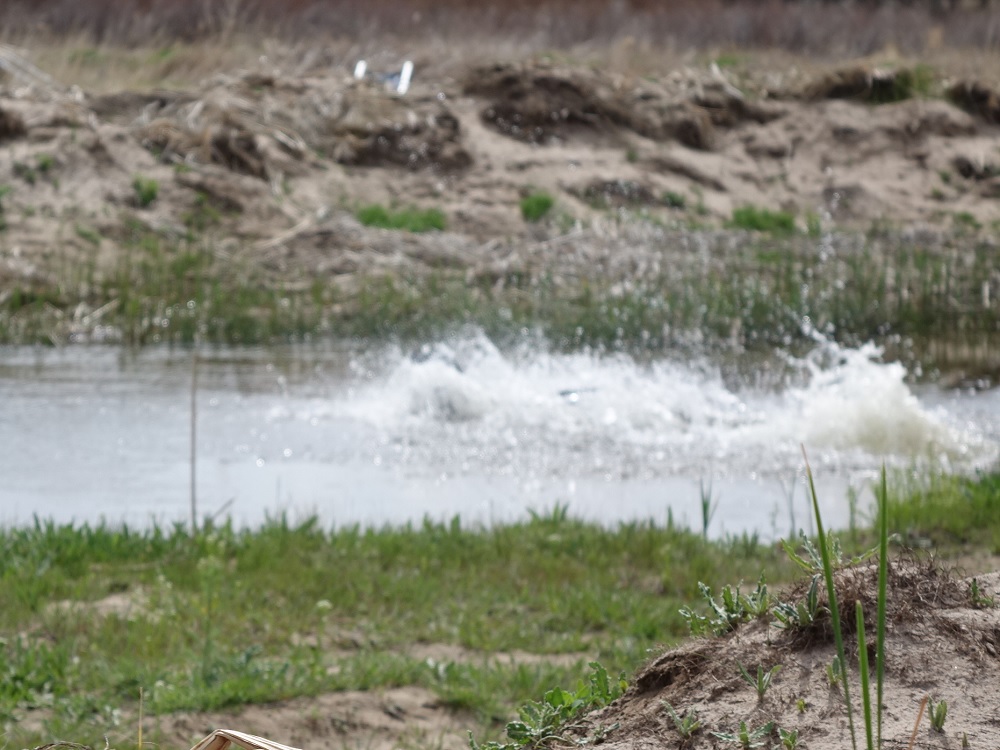
The water marks were set up at the end of a spit of land. The first mark was to the right and across a channel into a marshy area to give a slight splash when the birds landed. The second mark was to the left in open water on a good-sized pond.
Tisket did great on the first mark, except she had to check the decoys on the way back. She never dropped her bird, but had to bump each decoy with her nose to make sure it wasn’t real.
The open water swim was out and back, despite the slight chop due to the wind.
Another pass for Tisket!
On Sunday we started with the water marks and Tisket’s daughter, Wynk, got to run her first hunt test.
Both marks were across a channel – wider than yesterday’s location – and onto a sandy bank with sparse grass.
Tisket was out and back quickly on both birds. Very nice retrieves.
Wynk came out raring to go! There wasn’t room for a running start, but she leaped into the water with a big entry and picked up each bird in turn. No time wasted hunting around – she knew exactly where her birds were.
On to the land marks for both girls!
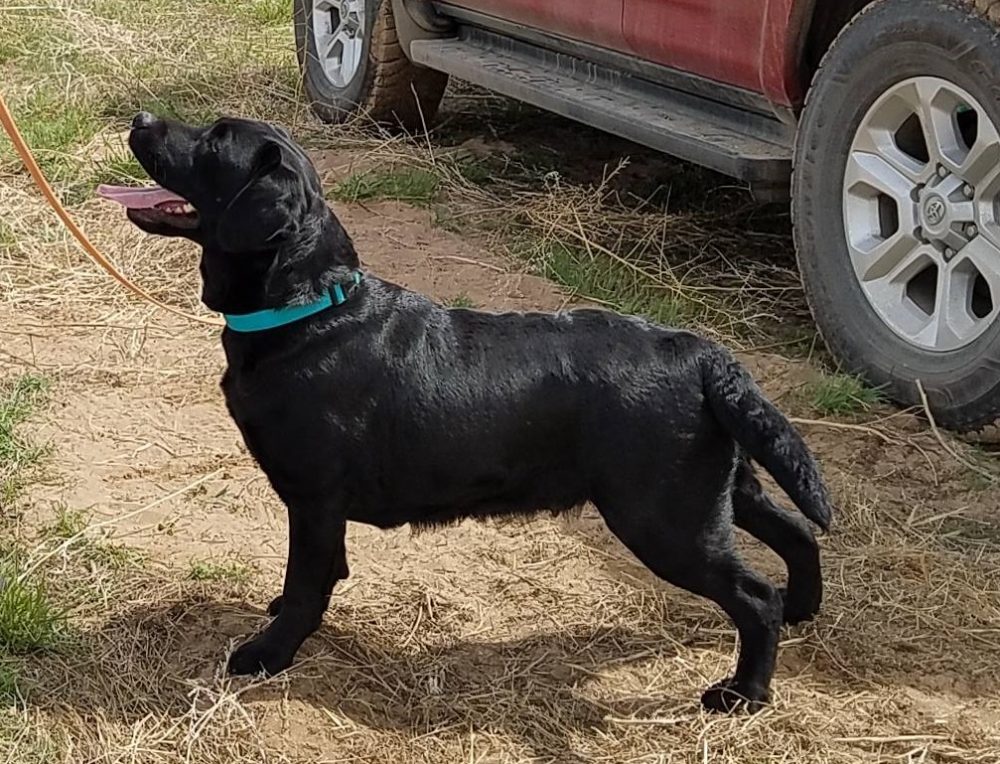
It was hot and starting to get muggy with a thunderstorm brewing to the west by the time we got the land series set up. Didn’t bother either girl in the least.
Tisket ran first again. Out, scoop up the bird and back in no time. The second bird landed in a little swale and she overran it by a yard or two, but turned quickly, scooped it up and back to me. No question that she picked up another pass and that was enough for her title!
Wynk came out raring to go again. Good, because I was wilting with the heat and humidity. Although she’s not very tall, she motored her way to each mark and surprised a few people with her speed. Out and back quickly on the first mark. Slide and turn as she tried to pick up the second bird without stopping. No question; she likes this game!
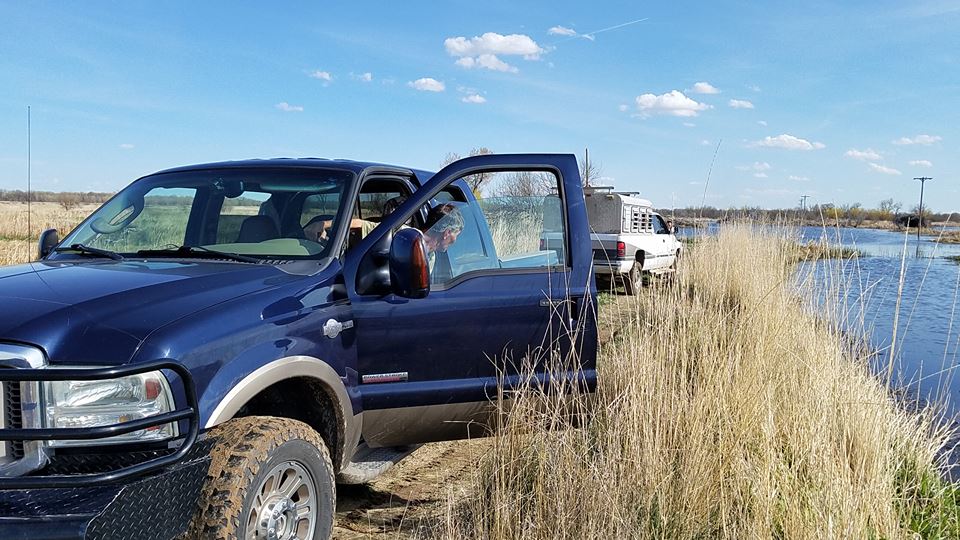
Overall, great weekend.
Tisket finished her title, Wynk got her first pass and my truck didn’t stay stuck for long!
Enjoyed dove opening day with my friend, Tom Osborne! And of course we had Arwen and Woody with us doing all the work.
Arwen, at 10-1/2, still has what it takes. She not only handled her main duty of fetching the birds we shot, but also worked as a “traffic cop.” In the beginning, the birds seemed to know where we were and took a detour. So, homo sapiens decided to send canis familiaris about 50 yards away to direct the birds our way.
It worked! Arwen took my cast and went up on a ridge where her shiny, black coat gave the birds the idea they should fly somewhere else. hee hee
It turned out to be a gorgeous evening with lots of birds flying!
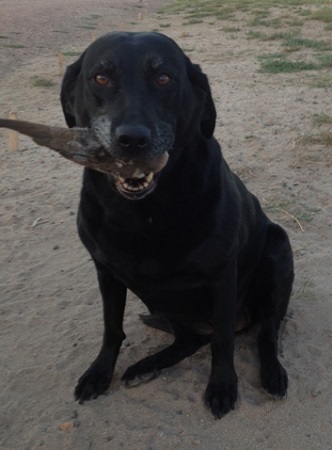
We had a great weekend – despite the heat and wind near Boone, CO. Arwen passed a tough Finished test, Tory passed his 3rd Seasoned test, and Jazzy got to run two Started tests and passed both!
The Finished test started with a wide-open triple “dove” hunt and a diversion as the dog was coming in with the last bird. Then a blind retrieve with lots of suction to the dike and old falls. Arwen did fabulously! I, on the other hand, “missed” every bird I shot at.
Afterward we decided to try for ducks. This series was a mind-bender of trying to remember which bird is shot at by which handler and which dog gets to retrieve.
It started off with a buddy on the honor bucket with his dog as Arwen and I walked down the muddy path to the pond. On the way, a duck comes sailin’ in from the left. Both handlers take a shot at it, but remembering not to shoot in the direction of the other handler! The honor dog picked up that bird while the working dog had to watch.
Once we got settled on a bucket, a duck came in from over our right shoulder and quickly thereafter another duck came in from the left. Both handlers shot at the birds. Arwen picked up the left bird after a long swim and then rooted the right bird out of the reeds.
Somehow with all that “shooting” we put down another bird way off to the left. The line to the blind was just off the beach with suction to the shore and to the old fall. Couple whistles and Arwen picked up that bird.
Time for a new “buddy.” As he came down the path with his dog, we moved to the honor bucket. But this dog was amped! When he came into sight Arwen must have figured she’d need a headstart to beat him to HER birds and took a few steps toward the water during the double, but luckily decided not to go any further! Good dog!
